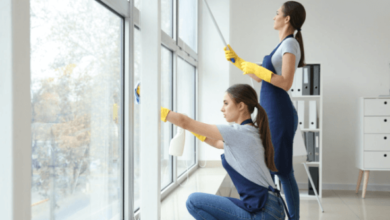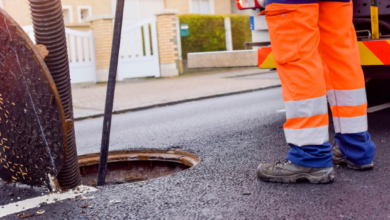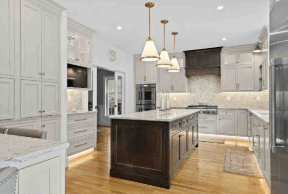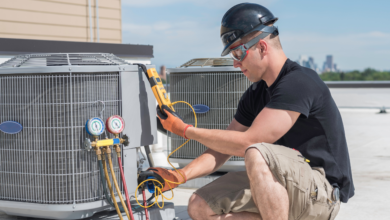Are Conservatories Worth It?
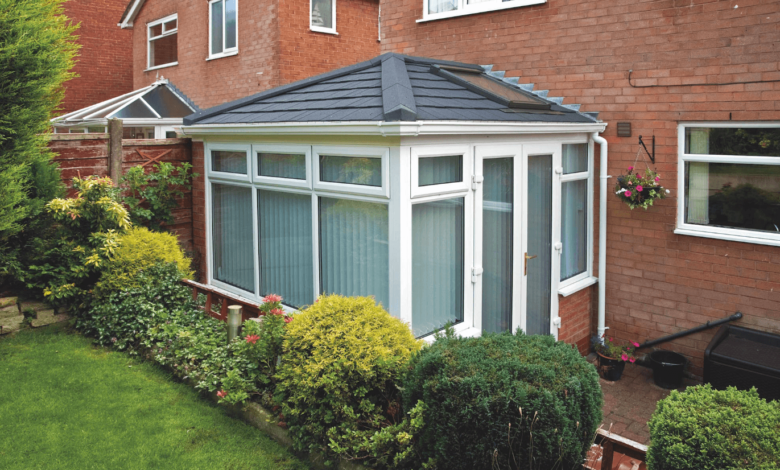
Conservatories, while offering additional living space and a connection to nature, come with both advantages and drawbacks that homeowners must carefully consider. As reported by Countrywide uPVC, these glass-enclosed extensions can boost property value and provide a cost-effective alternative to traditional home additions, but they also present challenges in temperature regulation and maintenance.
Energy-Efficient Conservatory Designs
Modern conservatory designs are increasingly focusing on energy efficiency to address the traditional issues of temperature regulation and high energy costs. These innovative designs incorporate several key features to create comfortable, sustainable living spaces:
High-performance glazing is at the forefront of energy-efficient conservatories. This advanced glass offers improved insulation and reduced heat transfer, helping to maintain a stable indoor temperature year-round. Some glazing options even incorporate smart glass technology, which can automatically adjust its tint to control solar gain and glare.
Sustainable building materials are also gaining prominence in conservatory construction. These materials not only reduce the environmental impact but also contribute to better insulation and energy efficiency. For instance, thermally efficient solid roofs are becoming a popular choice, as they help prevent excessive heat gain from the sun’s rays while retaining warmth in colder months.
Passive design strategies are being integrated into conservatory designs to naturally regulate indoor temperatures. These include:
- Solar shading: Strategically placed overhangs or external blinds to reduce direct sunlight in summer
- Thermal mass: Using materials that absorb and store heat during the day and release it at night
- Natural ventilation: Incorporating openable windows and roof vents to promote air circulation
To further enhance energy efficiency, some conservatories are incorporating underfloor heating systems. When combined with floor insulation, this can improve the overall thermal performance of the space by up to 70%.
The latest trend in energy-efficient conservatories is the concept of modular, self-sustaining pods. These innovative structures integrate renewable energy sources, such as solar panels, with advanced insulation and climate control systems to create highly efficient, low-impact living spaces.
For those looking to upgrade existing conservatories, replacing old windows with A-rated glazing can lead to energy savings of up to 50%. Additionally, installing thermal blinds can provide an extra layer of insulation, although this should be considered a stopgap solution rather than a long-term fix.
By combining these energy-efficient design elements, modern conservatories are evolving into year-round living spaces that offer both comfort and sustainability. These advancements not only reduce energy costs but also align with the increasing focus on environmentally conscious home improvements.
Comparing Conservatory Roof Options
When choosing a conservatory roof, homeowners have several options to consider, each with its own advantages and drawbacks. The main types of conservatory roofs are glass, polycarbonate, solid (tiled), and hybrid roofs.
Glass roofs are the most popular choice, offering excellent natural light and a bright, airy feel. Modern glass roofs are energy-efficient, with high-quality options providing superior insulation and temperature control. They can help keep the conservatory warm in winter and cool in summer, making them suitable for year-round use.
Polycarbonate roofs are a more budget-friendly option. While they allow plenty of light, they offer less insulation than glass and can be noisier during rain. However, they are lightweight and easy to install, making them a practical choice for some homeowners.
Solid or tiled roofs are gaining popularity due to their excellent insulation properties. They’re the most durable and long-lasting option, helping to maintain a comfortable temperature year-round. Tiled roofs also provide better noise reduction and can blend seamlessly with the existing house architecture. However, they significantly reduce natural light compared to glass or polycarbonate options.
Hybrid roofs, such as the Livinroof system, offer a compromise between solid and glazed roofs. These innovative designs combine solid panels with glazed sections, allowing homeowners to balance insulation with natural light. Hybrid roofs can be customized to direct light where it’s needed most, creating stunning designs while maintaining energy efficiency.
When it comes to materials, aluminium is increasingly favored for its strength, longevity, and low maintenance requirements. The Quantal system, for example, uses externally sleeved aluminium to create a thermally efficient and durable roof structure.
For those seeking maximum thermal efficiency, the S2 Conservatory Roof stands out. It accommodates glazing up to 36mm thick, exceeding industry standards, while its slimline aluminium frame ensures unobstructed views and ample natural light.
Ultimately, the best conservatory roof option depends on individual needs, budget, and the specific requirements of the space. Factors to consider include desired light levels, insulation needs, noise reduction, aesthetics, and long-term maintenance. By carefully weighing these factors, homeowners can choose a roof that enhances their conservatory’s functionality and comfort throughout the year.
Cost Breakdown of Victorian Conservatories
Victorian conservatories are a popular choice for homeowners seeking to add elegance and character to their properties. The cost of these ornate structures can vary significantly based on several factors, with prices typically ranging from £10,000 to £33,500.
The size of the conservatory is a primary determinant of cost. A standard 3m x 3m Victorian conservatory serves as a baseline, with prices starting around £10,000 for uPVC frames and £15,000 for hardwood options. Larger sizes naturally command higher prices, with some high-end installations reaching up to £50,000 or more.
Material choice significantly impacts the overall cost:
- uPVC frames: £17,500 – £25,500
- Wooden frames: £25,500 – £33,500
These price ranges reflect the durability, maintenance requirements, and aesthetic appeal of each material. Wooden frames, while more expensive, offer a traditional look that complements the Victorian style.
The complexity of the design also affects pricing. Victorian conservatories typically feature a distinctive multi-faceted bay front, which can be either pentagonal or hexagonal. This intricate design, along with ornate detailing such as finials and cresting, contributes to their higher cost compared to simpler styles like lean-to conservatories.
Roofing options play a crucial role in the final price:
- Polycarbonate roofs: £6,500 – £8,500 (depending on size)
- Glass roofs: £7,500 – £9,500 (depending on size)
Glass roofs, while more expensive, offer better insulation and noise reduction properties, making them a popular choice for year-round use.
Additional features and customizations can further increase costs. These may include:
- Stained glass elements
- Bespoke joinery work
- Fretwork and scrollwork
These traditional Victorian elements, while adding to the authenticity and charm of the conservatory, require skilled craftsmanship and thus come at a premium.
It’s important to note that these prices typically include installation costs. However, additional expenses may arise from site preparation, planning permissions, and any necessary groundwork.
When budgeting for a Victorian conservatory, homeowners should consider not just the initial installation costs but also long-term factors such as energy efficiency and maintenance requirements. While the upfront cost may be higher than some other styles, a well-constructed Victorian conservatory can add significant value to a property and provide a beautiful, functional space for years to come.
Seasonal Temperature Challenges
Conservatories present unique challenges and opportunities throughout the year, with their performance varying significantly between summer and winter months. Understanding these seasonal differences is crucial for maximizing comfort and energy efficiency.
In summer, conservatories can become uncomfortably hot due to their large glass surfaces. The greenhouse effect can cause temperatures to soar, making the space unusable during peak hours. To combat this, experts recommend several strategies:
- Ventilation is key. Opening windows and doors, especially in the morning and evening when temperatures are cooler, can help maintain a comfortable environment. Installing roof vents can further improve air circulation.
- Solar control films applied to glass surfaces can reflect up to 80% of solar heat, significantly reducing internal temperatures.
- Blinds or curtains, particularly those with thermal properties, can block direct sunlight and help regulate temperature.
- Planting deciduous trees or installing external shading devices can provide natural cooling without compromising winter sun exposure.
Conversely, winter presents the challenge of heat loss through glass surfaces. However, modern conservatories can be adapted for year-round use:
- Upgrading to energy-efficient glazing, such as double or triple-glazed units with low-emissivity coatings, can dramatically improve insulation.
- Installing a solid roof can reduce heat loss by up to 70% compared to traditional glass or polycarbonate roofs.
- Underfloor heating, combined with proper floor insulation, can provide efficient warmth without compromising space.
- Thermal curtains or blinds can be used to retain heat during colder evenings.
Seasonal maintenance is crucial for optimal performance. In autumn, it’s important to clear gutters, check for leaks, and ensure all seals are intact to prepare for winter weather. Before summer, inspect ventilation systems and consider installing additional cooling measures if needed.
Energy efficiency varies greatly between seasons. In winter, a well-insulated conservatory can act as a thermal buffer, reducing heat loss from the main house. In summer, proper shading and ventilation can minimize the need for artificial cooling, potentially lowering energy costs.
By implementing these seasonal strategies, homeowners can transform their conservatories from weather-dependent spaces into comfortable, energy-efficient extensions that can be enjoyed throughout the year.
Polycarbonate vs Glass Roofs
Polycarbonate and glass are the two most common materials used for conservatory roofs, each offering distinct advantages and disadvantages. Understanding these differences is crucial for homeowners looking to build or upgrade their conservatories.
Glass roofs are generally considered superior in terms of energy efficiency and aesthetics. Modern glass roofs offer excellent thermal insulation, with U-values ranging from 0.50 to 1.0 W/m²K for insulated solar control glass. This superior insulation helps maintain a comfortable temperature year-round, keeping the conservatory warm in winter and cool in summer. Glass roofs also provide better UV protection, safeguarding furniture and interior fittings from sun damage.
Aesthetically, glass roofs are more visually appealing, offering crystal-clear views of the sky and allowing abundant natural light to enter the space. They create a more premium look compared to the often translucent appearance of polycarbonate roofs.
Glass roofs also excel in acoustic insulation, significantly reducing external noise from rain, traffic, or other sources. This creates a quieter, more relaxing interior environment.
However, glass roofs come with a higher price tag, typically costing 3-4 times more than polycarbonate alternatives. They are also heavier, which may require additional structural support.
Polycarbonate roofs, while less aesthetically pleasing, offer several advantages. They are significantly lighter than glass, making installation easier and reducing the load on the conservatory structure. For example, 10mm polycarbonate weighs around 4.5kg per square metre, less than half the weight of equivalent glass.
Polycarbonate is also more impact-resistant than glass, able to withstand extreme conditions like strong winds, heavy rain, and even occasional impacts without cracking. This durability makes it a good choice for areas prone to severe weather.
The main drawback of polycarbonate is its lower thermal efficiency. Polycarbonate roofs typically have U-values between 1.6 and 2.1 W/m²K for 25mm thickness, making them less effective at regulating temperature compared to glass. They are also more prone to scratches and surface damage over time.
Noise can be an issue with polycarbonate roofs, as they tend to amplify the sound of rain and hail. This can create a noisy environment during inclement weather.
In terms of longevity, glass roofs generally outlast polycarbonate. Polycarbonate roofs are more susceptible to discoloration and may become brittle over time due to UV exposure. Glass roofs, on the other hand, maintain their clarity and structural integrity for longer periods.
Ultimately, the choice between polycarbonate and glass depends on individual priorities. For those prioritizing energy efficiency, aesthetics, and long-term performance, glass is the superior option despite its higher cost. For budget-conscious homeowners or those in areas with extreme weather conditions, polycarbonate offers a more affordable and durable alternative, albeit with some compromises in thermal efficiency and aesthetics.
Read also: Easy Home Projects to Add Extra Living Space
Insulated Conservatory Flooring Options
Insulated flooring is crucial for maintaining a comfortable temperature in conservatories year-round. Several effective options are available, each with unique benefits for thermal efficiency and aesthetics.
For slab floors, insulation boards offer excellent thermal properties. Materials like PIR (polyisocyanurate) or polystyrene can be laid directly on concrete slabs before the final flooring is installed. These boards provide a high level of insulation, preventing heat loss through the floor. For optimal results, using the densest material available, such as solid polystyrene, is recommended to improve insulation effectiveness.
Insulated screed is another option for slab floors, combining structure and insulation. This method involves mixing insulating materials into the concrete screed applied over the slab, creating a durable heat barrier. While effective, it typically requires professional installation due to its technical nature.
For raised floors, underfloor insulation is an effective solution. Materials such as mineral wool, fiberglass, or rigid foam boards can be installed between floor joists to prevent heat escape. This method is relatively straightforward to implement and can significantly improve thermal efficiency.
Insulated floor panels are gaining popularity for their ease of installation and suitability for DIY projects. These panels can replace existing floorboards or be laid on top, providing a continuous layer of insulation. For new constructions or major renovations, experts recommend using at least 100mm of high-performance insulation material like Kingspan Ecotherm under a screed or smooth concrete finish.
When insulating conservatory floors, it’s crucial to include a damp-proof membrane before laying insulation to prevent moisture damage and ensure longevity. Additionally, adding a thin sheet of polystyrene over the entire floor before re-laying floorboards can serve as an effective draught-proofing layer.
For the final flooring layer, luxury vinyl tile (LVT) is an excellent choice for conservatories. LVT is specifically engineered to withstand high temperature variations, making it ideal for these spaces. It’s waterproof, easy to maintain, and available in a wide range of contemporary styles that can mimic wood or stone. LVT also provides additional insulation, helping to maintain a comfortable floor temperature throughout the year.
Other suitable options include laminate flooring, which offers durability and a range of finishes, and engineered wood flooring, which provides the natural beauty of hardwood with added stability suitable for conservatory environments. Both these options can be installed over properly insulated subfloors for optimal thermal performance.
By combining effective insulation techniques with appropriate flooring materials, homeowners can create a conservatory space that remains comfortable and energy-efficient throughout the year, regardless of external temperature fluctuations.

